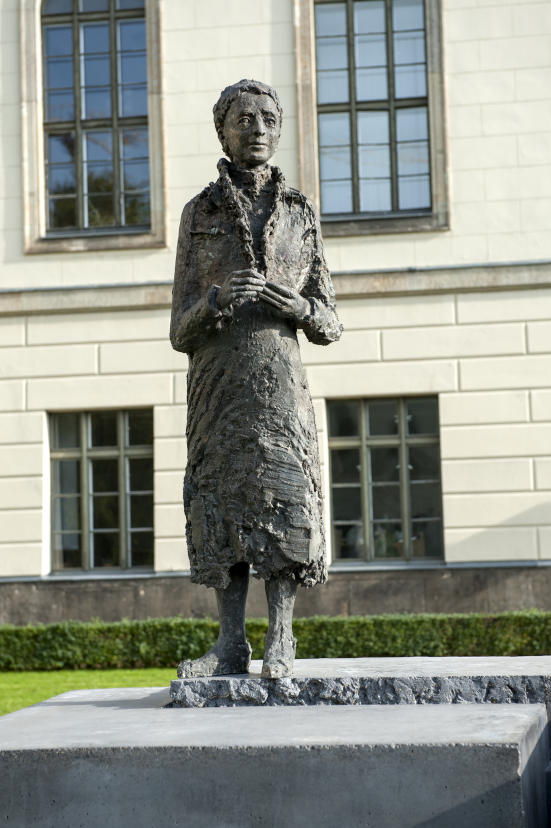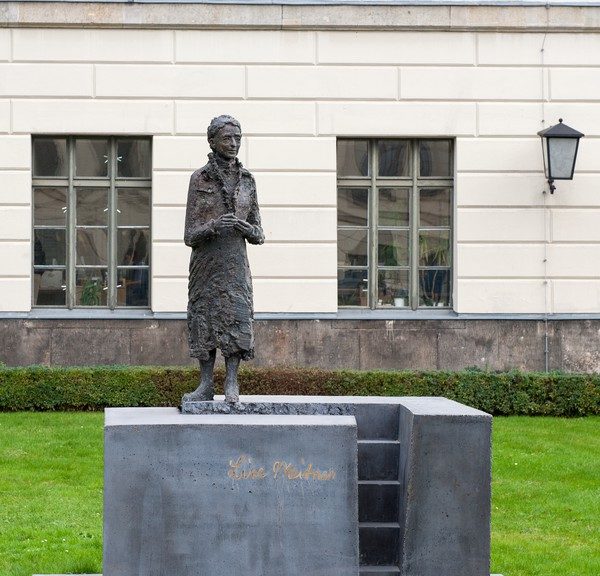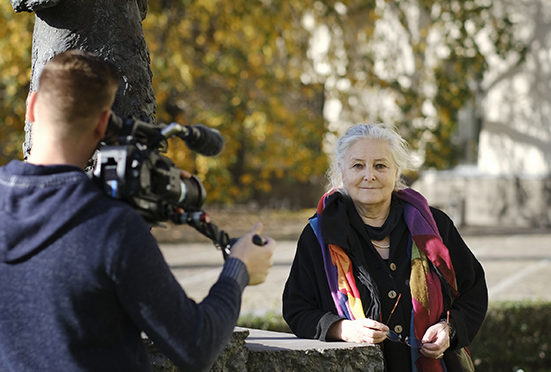Object of the Month 01/2023

Since 2014, Lise Meitner faces Unter den Linden; on the other side of the cour d'honneur of the main building, Theodor Mommsen and Max Planck face her. The monument to Hermann von Helmholtz completes the historical series, which is broken up and continued both in terms of contemporary history and aesthetics by Lise Meitner's representation - no longer larger than life and in a space-consuming pose, but set back and asymmetrically on the plinth. The bronze monument to Lise Meitner (1878-1968) is the youngest in the university's cour d'honneur and the only one to date to honour a female scientist. Lise Meitner (1878-1968) combines many special features in her scientific biography: she was the second woman to receive a doctorate in physics from the University of Vienna in 1906; in 1913 she was the first woman to become a scientific member of the Kaiser Wilhelm Society; she was the first woman to work as an assistant to Max Planck; in 1922 she became the first female physicist in Prussia to habilitate at the University of Berlin; and finally, in 1926, she was appointed as the first associate professor for experimental nuclear physics. In retrospect, she herself describes the fact that she took her work with the students very seriously as "a great human responsibility for our young colleagues, with whom we are together all day and for whose overall human development everything we do and say can have an influence".
Lise Meitner Monument
Nuclear power for peaceful use
Monument with signature, nuclear reaction and calculation
Author: Christina Kuhli, Custodian of the HU
Art Collection / Custody of the Humboldt University
Photos: Matthias Heyde

